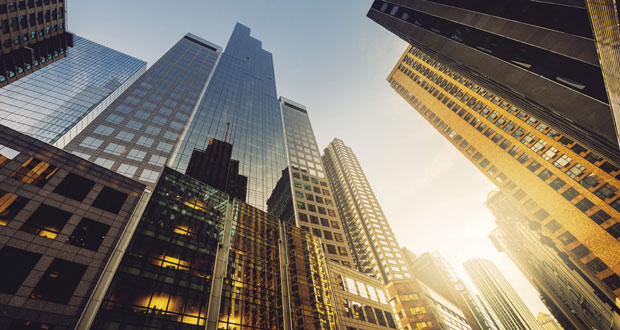The world’s major business districts have regained their global pulling power, according to the 2025 EY–Urban Land Institute (ULI) Global Business Districts Attractiveness Report, which finds that 63 per cent of stakeholders surveyed now view these districts as more attractive than before the pandemic.
The report, the third in a series produced by EY and ULI for the Global Business Districts Innovation Club, assessed 30 major business districts across 19 countries in Europe, North America and Asia, benchmarking them against eight indicators including macroeconomic performance, talent, real estate, innovation and sustainability.
Five years after Covid-19 reshaped how and where people work, business districts such as Midtown Manhattan, the City of London, Paris La Défense, Tokyo Marunouchi and Singapore’s Downtown Core, continue to be the command centres for global business and investment. Collectively, the top 30 districts generate USD 4.5 trillion in annual GDP, employ more than seven million people, host to 84 Global Fortune 500 companies, and house 296 HQs.
- Historic and foundational sites — the very origin of the “business district” concept — remain at the top of the rankings. New York leads globally (Midtown #1 and Financial District #2), followed by Tokyo Marunouchi (#3), Paris La Défense (#4), and London’s City (#5). While they maintain their lead, the global landscape is evolving, with rising vacancy rates and weaker investment trends.
- Asian business districts continue their ascent: Beijing, Singapore, and Seoul feature in the top 10, reflecting the region’s growing economic influence — and the challenges faced by many North American and European counterparts.
- In North America, New York’s strength contrasts with the mixed performance of Los Angeles and San Francisco, which struggle with vacancy and safety issues. The average vacancy rate in major North American business districts is now nearly three times higher than in Asia.
- In Europe, the ranking and trajectories of major business districts illustrate the continent’s loss of competitiveness. Europe’s six leading districts host 2.5 times fewer Fortune Global 500 headquarters than their Asian counterparts. In 2024, investment volumes were 60 per cent lower than those in Asia — a complete reversal from 2020. Yet, Europe also shows notable progress in environmental transition, particularly in Frankfurt and Amsterdam.
- New business districts are emerging: DIFC (Dubai) and KAFD (Riyadh) are asserting themselves in the Middle East, supported by favourable economic conditions. In India, Outer Ring Road (Bangalore) and BKC (Mumbai) could represent the next generation of global business districts, alongside Johannesburg, SãoPaulo, and Casablanca.
Simon Chinn, Vice President, Research & Advisory Services, ULI Europe, commented: “Contrary to predictions of their decline, global business districts have adapted and recovered. They remain the nerve centres of economic influence, yet their role is evolving. The most successful and resilient will be those that constantly adapt, balancing commercial vitality with climate responsibility and multifunctional, human experiences.”
While confidence is returning, the pandemic has left lasting structural shifts. Hybrid working, talent shortages, and escalating operating costs are redefining the urban core. Office occupancy across major markets remains uneven, with high demand for Grade A, sustainable and modernised space, but weak take-up for older building stock.
Marc Lhermitte, Partner at EY, noted: “Businesses are willing to pay a premium for quality and sustainability, but hybrid work means the definition of ‘prime’ has changed. Therefore flexibility, accessibility and a sense of place are now as critical as rent.”
Beyond immediate economic and geopolitical tensions, the report highlights that four megatrends are reshaping the future of global business districts. Each reflects deep demographic, technological, and environmental shifts that are transforming how cities and their economic cores — function, evolve, and create value and experience.
1. Talent First: 76 per cent of executives rank talent attractiveness as their top priority when choosing a business district. These districts must now act as partners for companies, helping them attract and retain employees with continued investment in transport, technology, place making, safety and (affordable) housing – which has become a critical priority for 46 per cent of executives.
Concerns are shifting beyond office buildings toward the urban experience: vitality and quality of services are now prerequisites. Only business districts offering true diversity of uses such as green spaces, residential, retail, culture, and leisure plus pro-active placemaking, will continue to appeal to companies, employees, and investors.
2. The Soft and Hard Power of Real Estate: The question of “fair value” has become central to any real estate strategy, with 40 per cent of occupiers now citing this as a priority, up 14 points since 2020. Two paths emerge, urban design and quality. The survey shows that top-quality buildings and districts, those most accessible, modern, comfortable, tech-equipped, and energy-efficient continue to attract tenants.
3. The Dual Role of Technology and the Unicorn Gap: Technology has become fundamental to the operation and the attractiveness of global business districts for occupiers and talent. Despite concerns of technology and AI being a disrupter, it is also an enabler, reshaping real estate demand, driving operational efficiency, and redefining future competitiveness. However, major business districts are still struggling to attract new-generation innovators. Only 12 per cent of the world’s ‘unicorns’, privately held start-ups valued above USD 1 billion, are headquartered in Global Business Districts. This “unicorn gap” underscores a risk that GBDs could lose ground to more agile innovation clusters.
4. The Complexity of Sustainability: Sustainability has become central to the global business district agenda. The survey identifies three key levers to accelerate the transition, low-carbon mobility (cited by 54 per cent of respondents), building retrofits (49 per cent), and green and blue infrastructure (46 per cent).
Looking ahead, the report states that success will depend on the ability of business districts to fully integrate climate considerations into their planning, investment, and governance. Yet, a significant gap remains between ambition and action: fewer than 10 per cent of executives believe these areas are on track to address climate risks.
European districts lead, with Frankfurt’s Bankenviertel topping the sustainability ranking, followed by San Francisco’s Financial District and London’s City.
The EY & ULI report concludes that the next decade will see business districts evolve into “Central Social Districts or CSD’s”, which will be inclusive, mixed-use spaces that blend work, living, culture and climate resilience.
The way we work has changed – yet, many organisations are still relying on rigid, one-size-fits-all tools to manage desks and meeting rooms, according to a new study from workplace management solutions provider, Matrix Booking.
Spreadsheets, calendars, and generic booking software may have worked once, but they’re struggling to keep pace with today’s flexible, hybrid workforce. The result? Wasted time, frustrated employees, and expensive underutilised space.
Matrix Booking’s new study, ‘One-size-fits-all booking systems don’t work for today’s workforce’, explores why current systems are falling short – and how organisations can reimagine workspace management to boost efficiency, employee experience, and cost savings.
To download your FREE copy click here.





